Excerpt from ‘The history of Thanalan, from Belah’dia to Ul’dah by Archon Niniri Niri.
It had long been claimed by the powers of Ul’dah that the abandonment of the copper mining operation commonly known as the Copperbell Mines three hundred years ago was due to the drying up of the veins within, and that the mines were off-limits due to monsters that had moved in after the abandonment. When the powerful Amajina & Sons Mineral Concern reclaimed the mines, however, using new mining techniques in an attempt to reach valuable veins too deep for the ancient mines to exploit they discovered the true end of the Copperbell Mines.
The Thorne dynasty of Ul’dah, rulers in a two hundred year interregnum of the ‘Ul dynasty, were ardent reformers of the city-state’s policies and relentlessly sought methods of stabilising the state before handing control back to the Ul’ line. This had classically been held to involve such matters as the establishment of trade with Radz-at-Han, the movement of the city itself and the formation of alliances with the Amalj’aa of Paglth’an. As it turns out, they had also enslaved members of the hecatoncheires gigant tribe as miners to further bring prosperity to the state.
The gigants turned on their overseers, butchering them in revenge for their oppression. In response, Ul’dah blew the mineshafts shut with the mining explosives and sealed the hecatoncheires in the dark to starve and die. Three hundred years later as the Amajina & Sons miners blew open the old shafts they were confronted by an army of these gigants charging from the depths of the earth. The former slaves had been driven understandably mad by the centuries of isolation in the dark as well as their hatred for those who had enslaved them so, and fell upon the miners in an attempt to butcher them. The Concern called in a party of adventurers, who purged the gigants and rescued the surviving prospectors.
Shaft A1
After gaining permission from the Amajina & Sons Mineral Concern I had dispatched a research team to the mines. The first shaft they entered was a small, simple place with little of significance. There are a number of inaccessible side-shafts and doorways in this area, some of which are filled with earth and others blocked off with simple barricades. These were almost certainly the housing quarters of Copperbell’s contingent of non-gigant staff as well as a few of the very earliest mine shafts, closest to the surface. After passing through a sealed metal blasting door the team accessed an elevator leading further down into the mine.
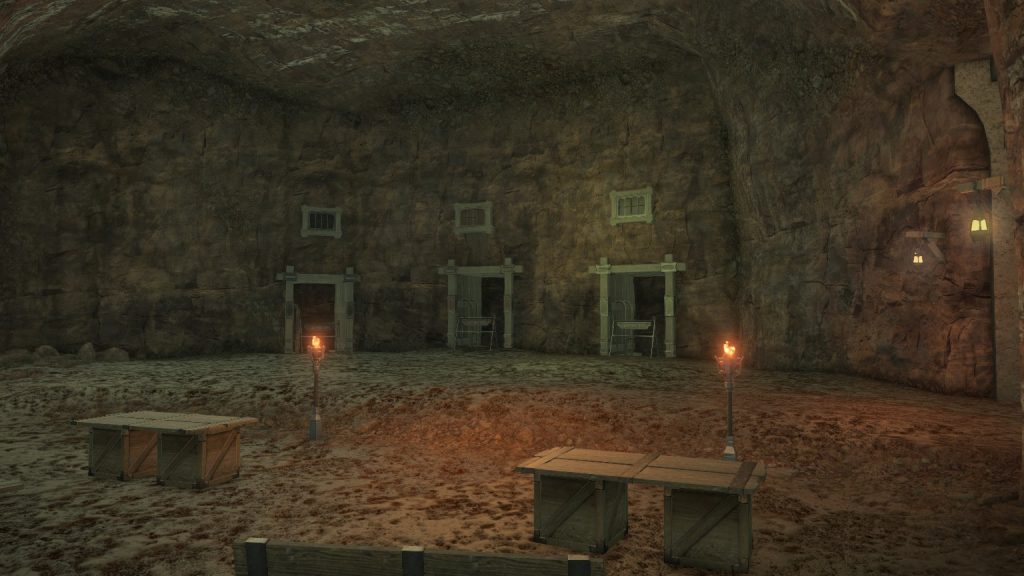
Shaft B1
The elevator led a more typical mineshaft, constituting a number of tunnels and walkways built around a large natural cavern. Various equipment such as lifts for transporting ore can be observed within the shaft, and a number of walkways have collapsed into the abyss of the cavern, likely worn away by centuries of age. Some of the side-shafts in this area reveal an array of blue crystals, likely rock charged with lighting aether or copper sulfate.

Maneater Rip
A small and seemingly inconsequential side-chamber, the few remaining myths and tales of Copperbell Mines that remain seem to label this room ‘Maneater Rip’ for unknown regions. It may be that the pits of crevasses in this room claimed the lives of a number of the non-gigant staff of the mine, perhaps even with gigant assistance, earning it the current grim name. Ultimately, however, the truth is lost to time.
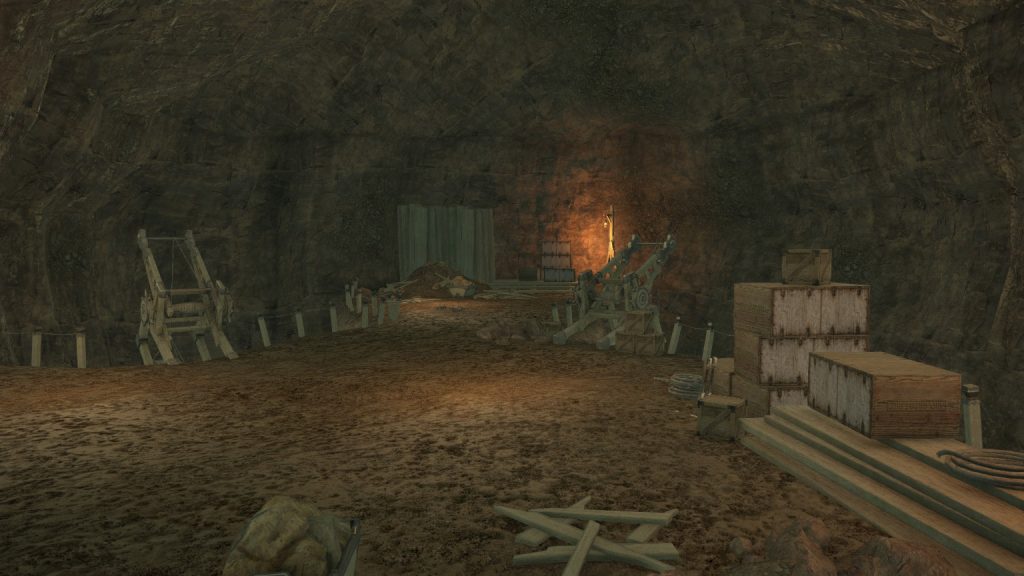
Shaft B4
Proceeding further into the mine, the team arrived at another small shaft. The initial chamber seemed to act as a store-room of some kind, and a number of minecarts holding rocky matter were observed. Firsthand accounts from those rescued from the mine imply that this was one of the shafts that required adventurers to blast open cave-ins to proceed, and indeed blasting equipment was observed by researchers. Further within the shaft another elevator was found, granting access to yet deeper shafts.
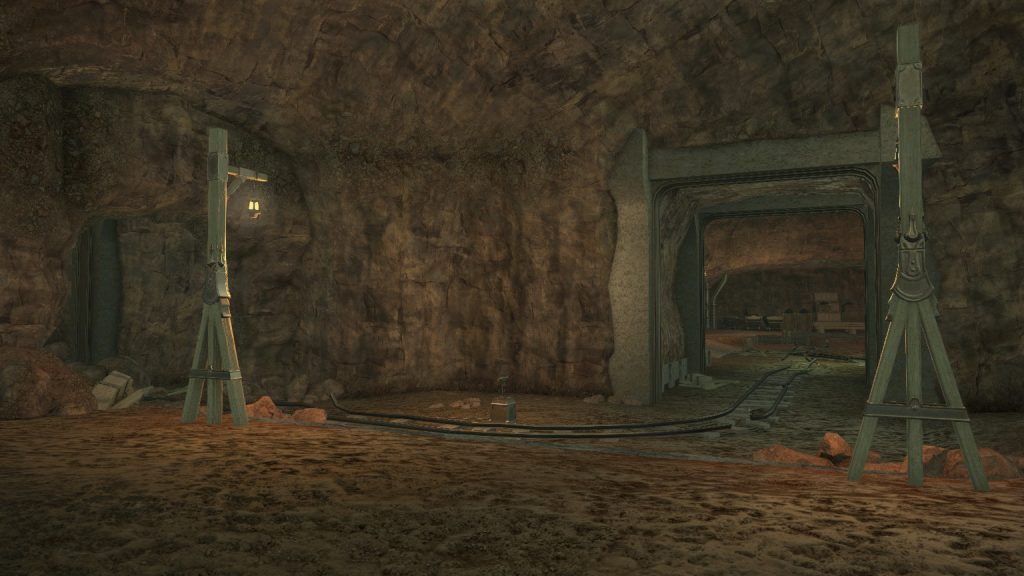
The Screaming Dark
Originally a junction of shafts and passages, this chamber still displays the sophisticated walkways and minecart tracks that enabled the mine to run three centuries prior. Crude scrawlings by the hecatoncheires seem to denote that this chamber had earned ‘the Screaming Dark’ as its name. As ominous as this is, it almost certainly a reference to the torment experienced by those trapped inside the mine when it was sealed, including the hecatonchieres.

Shaft E1
After descending a second elevator the team found itself within a shaft named as E1, which seemed to resemble a connected trio of chambers with an additional antechamber. To the right is a pumping room, used to ensure that the mines do not flood and kill the laborers within. To the left is a pair of connected storerooms. Initial reports from the adventurers that cleansed the mines stating that these rooms were filled with ghosts suggests that a good number of those sealed in the mines found their end here, be they the Ul’dahn overseers or the gigant slaves. This was yet another area where the tunnels were collapsed in order to trap the rebelling slaves, and was cleared accordingly by the adventurers to pass onwards.

The Crying Dark
Shaft E1 terminates in a large room dominated by a system of troughs which cascade water down upon piles of ore. This may constitute a form of milling, but a specialist in mining I am not, and so I cannot speak to the purpose of this process. Similar evidence to that found in the Screaming Dark suggests that this chamber was named the ‘Crying Dark’. Again, similarly to the Screaming Dark, this is undoubtedly a reference to the grief of those sealed within the depths of the earth.
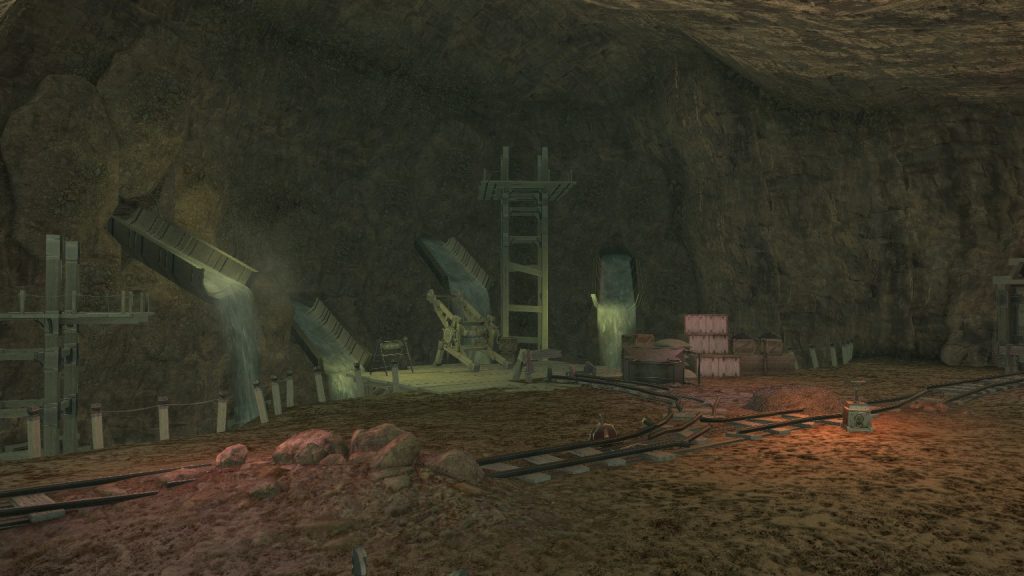
Shaft E2
The final shaft of Copperbell Mines that the team found was wholly different to the main body the mines. Almost entirely natural caverns, this area is home to a diverse array of fauna unlike the soulkin dominated tunnels previously encountered as well as a system of subterranean rivers and waterfalls. The area is composed largely of the same blue crystals observed in a side-passage previously in the mines. Again, this could be anything from rock charged with lighting aether to copper sulfate.
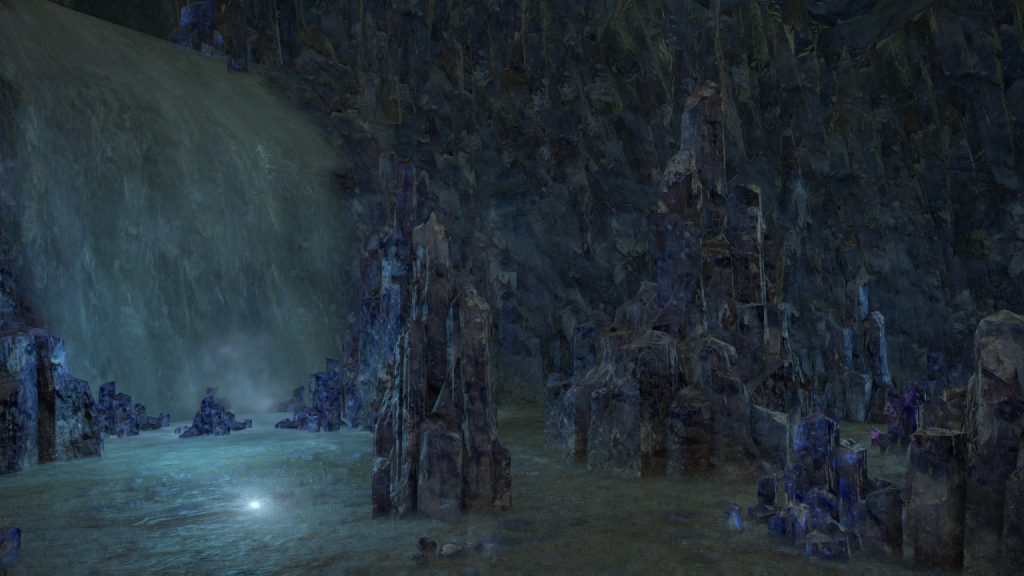
The Cold Throne
The team sent down into the mines reported, as the adventurers that purged the mine did, that the mine terminates in a large and unusual chamber. The purple crystal growths that characterized the previous shaft can be found here in turn. The defining feature of the room is a large stone doorway set with an elaborate metal door. This door has been broken open from the inside, but is not where the adventurers who cleansed the mines found their foe emerging from, as he instead broke into the chamber through the rock wall.
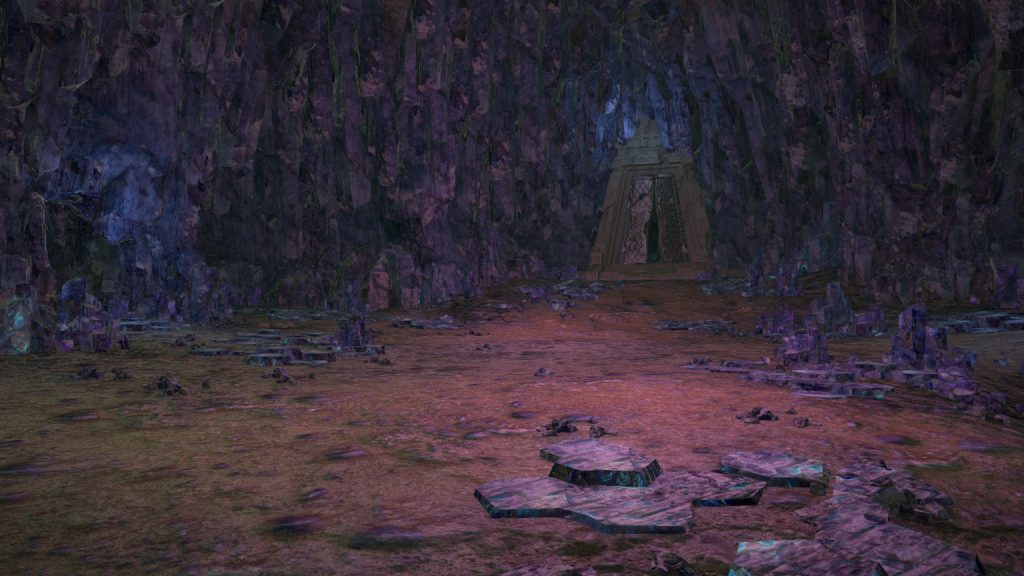
Closer inspection of the door reveals a design that appears to be an abstract depicting of the scale sigil used by Ul’dah, which can be traced back to the iconography of Belah’dia from which Ul’dah draws the scales and the flame of might, while adding the gem of prosperity on its own. This door seems to lead, quite plainly, to an empty cubby of stone that seems to hold little utility. This would seem, then, to hold a mostly ceremonial purpose and yet something did break out of it.
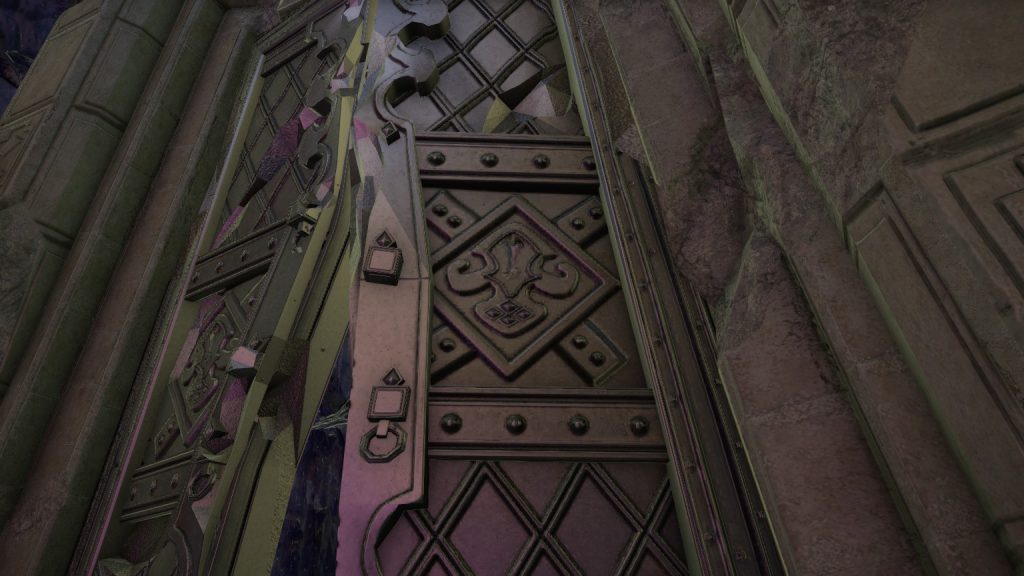
It may have served as facilities for maintaining the magically-imbued helms of the gigants, which would likely require the presence of thaumaturgists, who would have been priests of Nald’thal, befitting the decorations on the door. The name of the chamber, found in gigant scrawlings, was apparently the ‘Cold Throne’. This would fit if it were a source of authority for cold, callous Ul’dahn slavedrivers.




Leave a Reply